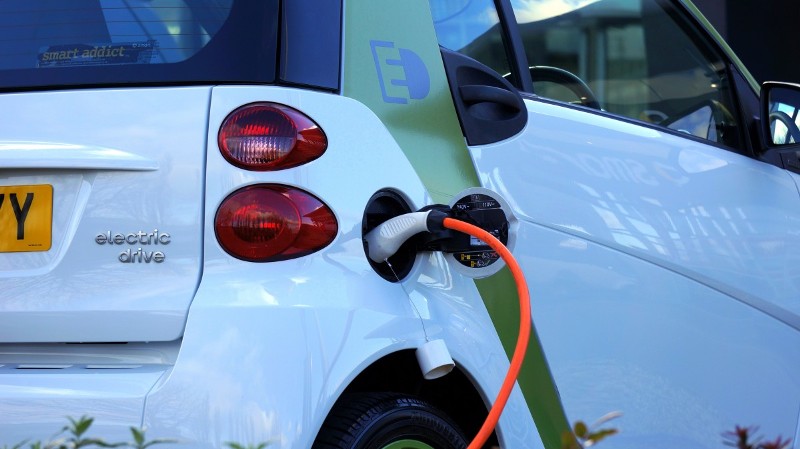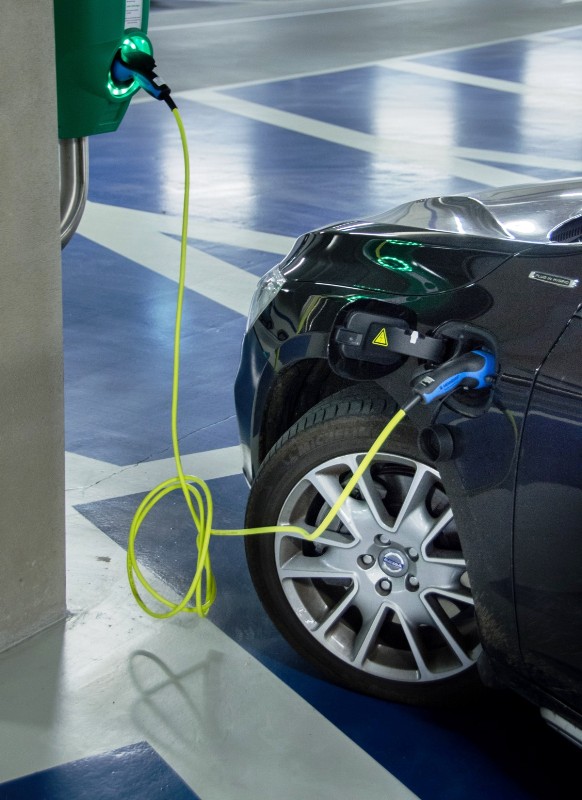Contents
– Electric car battery: characteristics
– The disadvantages of the electric car battery
– The ecological balance of the electric car battery
– The cost of the electric car battery
– Prospects for the evolution of the EV battery
The development of the Electric Vehicle (EV) depends almost exclusively on the evolution of the electric car battery. Ooreka takes stock of everything you need to know about their characteristics, advantages and disadvantages, and possible improvements.
Electric car battery: characteristics
How it works
The electric vehicle’s battery transforms chemical energy into electric energy during the vehicle’s power supply and reverses the process for its recharge.
Concretely, here is how it works:
– In each cell, 2 electrodes of different materials are separated by an electrolyte, a solid or liquid substance that allows the passage of electric current;
– Electrons, carriers of electrical charges (ions) from the electrodes, migrate from one to the other, creating an electric current.
The main types of EV battery
|
Batteries |
Advantages |
Disadvantages |
|---|---|---|
|
Nickel-cadmium |
– Lightweight |
The high toxicity of cadmium (no longer used). |
|
Nickel metal hydride |
– Slight |
– Onerous |
|
– High nominal voltage (3 to 3.7 volts/cell) |
– Delicate use (need for automated power supply management) |
|
|
Lithium-ion |
High mass and volume energy. |
Flammability. |
A closer look at the disadvantages of the electric car battery

The electric car battery can have disadvantages regarding autonomy, recharge time, and cost.
Autonomy
The motor industry claims an electric car battery can last 160 and 200 km. However, in actual use, the battery of an EV rarely lasts more than 100 km.
A few simple tips on driving or using the heating or air conditioning, for example, can help preserve the battery’s range.
Recharging
Recharging the battery is often long and depends on the type of plugs used:
The 220 V domestic socket is available everywhere but requires a 10 to 13-hour recharge.
– The “wall box” fast charging socket allows recharge of 8 to 10 hours in the 16A version and 4 to hours in the 32A version. The cost of this station is $600, excluding installation.
– The fast-charging station (underground parking lots, large surfaces, etc.) allows for a 30-minute charge ($900, excluding installation).
Weight
Currently, the weight of EV batteries is 250 kg: to have the autonomy of a thermal vehicle today, the weight of the batteries would have to rise to 1,250 kg!
Safety
Some lithium-ion batteries can short-circuit with age and cause an explosion.
The ecological balance of the electric car battery
To get the most accurate picture possible of the environmental impact of EVs and their batteries, we need to know some figures.
The carbon footprint
The average carbon footprint of a combustion engine vehicle is 142 g/km of CO2 equivalent. The EV varies (mainly because of the battery) between 1 g/km and 150 g/km. This depends on whether the recharging cycles are provided exclusively by nuclear power plants or whether this energy is supplied by coal, gas, or oil plants.
The environmental impact
It is very simplistic to limit oneself to the carbon footprint (as many lobbies do). The environmental impact covering the vehicle’s entire life cycle (production, use, and recycling) is more representative.
An analysis of the EV life cycle reached the following conclusions:
– The gap between combustion vehicles and EVs is small (9-14% lower impact per 100,000 km driven to the benefit of the EV).
– The battery has a significant impact on these results because of its production (extraction of metals such as lithium), its use (energy consumption when recharging), and its recycling, which is difficult and energy-consuming.
Good to know: the eventual replacement of an electric car’s battery is covered by the manufacturer’s warranty or a battery rental system.
Outlook for the evolution of EV batteries
The future of electric car batteries depends on their cost, weight, and performance changes.
At present, developments concern the materials used. Indeed, new batteries are being developed, made of iron and phosphate. They have many advantages:
– They are much less expensive to produce in series.
– They are less sensitive to overheating.
– They have a longer service life (2,000 to 3,000 charge/discharge cycles).
Other avenues are being explored for the sustainability of EVs, including using supercapacitors to replace batteries. This would eliminate the problem of weight. This is the price for the EV to compete with the internal combustion vehicle.
Read more:

